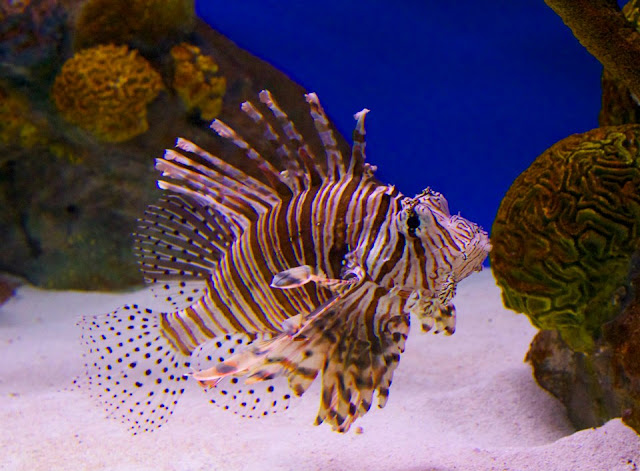 |
| The rare two-toned lobster that arrived at the Aquarium last year, always ready to celebrate Halloween |
Salem fisherman Dana Duhaime caught the lobster last year and knew right away she was special. He arranged to donate her to the Aquarium and sent her on with the name Pinchy, in honor of a giant lobster that appeared in a Simpsons TV episode. Pinchy has grown over the past year, and the molt of her discarded but amazing, two-toned old shell will also be shown by Aquarium educators.
Perfectly split-colored lobsters are extremely rare occurring in about 1 in very 100 million lobsters. Among those rare two-toned lobster, orange and black is the most common combination. While these rare creatures sometimes show the sexual characteristics of both genders, but this lobster is a female. Learn how these splits happen on a cellular level.
Here's video from the lobster's debut last year:
This animal will be on exhibit until this Sunday. Then she'll head behind the scenes again, where she'll make periodic appearances during the Live Animal Presentations. Plan your visit to see this remarkable animal in the Northern Waters Gallery at the New England Aquarium.
Curious about lobsters?
- Aquarium scientist Michael Tlusty, Ph.D., explains how lobsters get their basic colors
- Even more unusual colorations: The calico lobster
- Meet one of the largest lobsters to have lived at the Aquarium.
- Lobsters communicate by peeing in each other's faces.
- Aquarium scientists are researching lobster shell disease by rearing baby lobsters behind the scenes.
- Look for a lobster nursery display in the Blue Planet Action Center.




